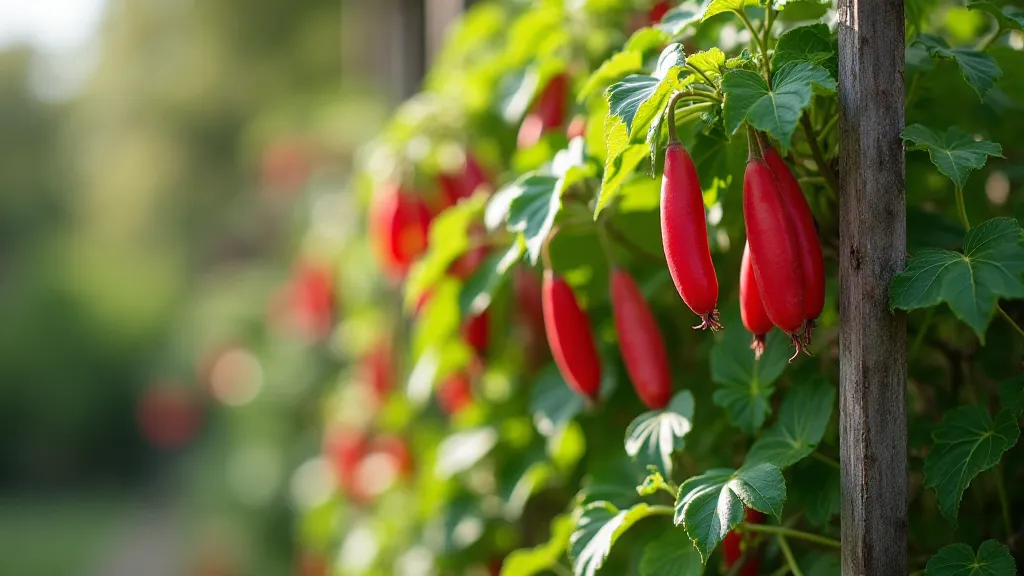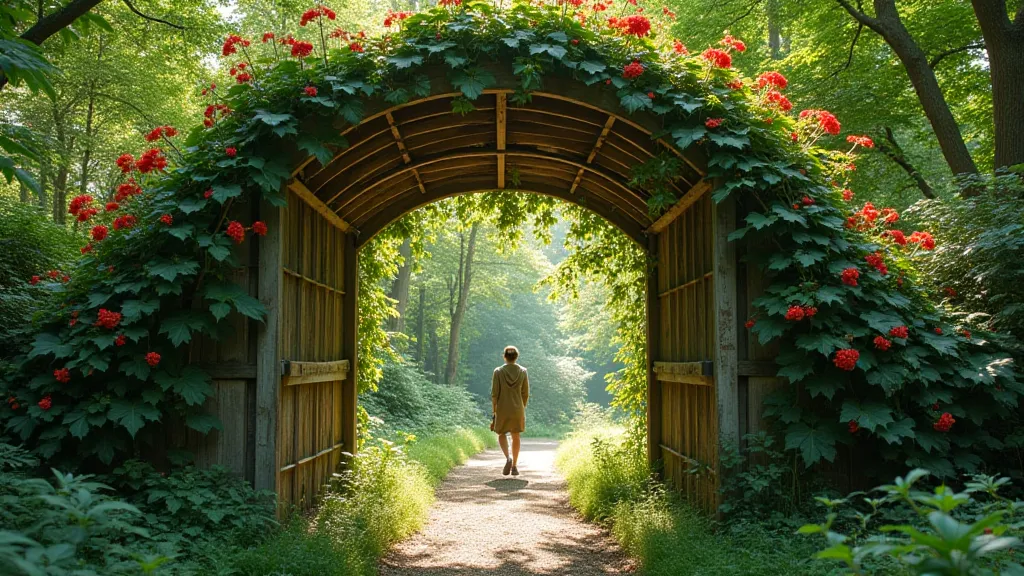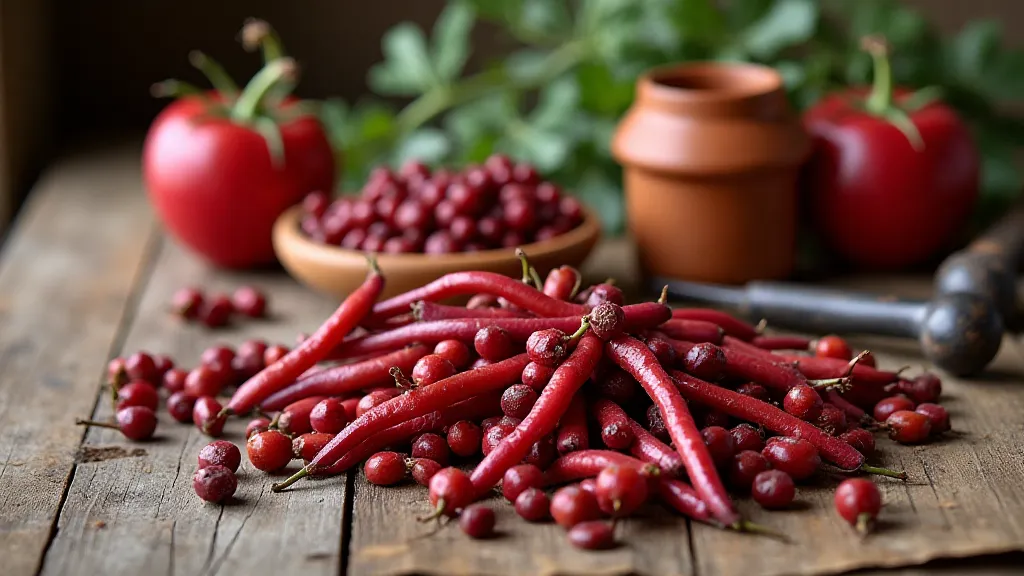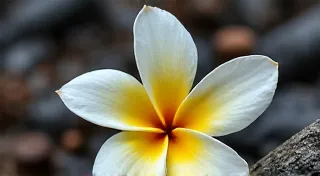A Symphony in Scarlet: The Runner Bean's Dramatic Flourish
There's a certain melancholy beauty in antiques. It's not just about age, but the echo of hands that have crafted and cared for something, a silent narrative woven into its very existence. Think of a worn antique accordion, its bellows sighing with the ghosts of melodies played at celebrations and quiet evenings. The intricate keys, once gleaming with polish, now bear the subtle patina of time. It’s a poignant reminder of skill, dedication, and a world that moved at a different pace. The Scarlet Runner bean, Phaseolus coccineus, evokes a similar feeling. It isn’t just a bean; it's a living heirloom, a visual and culinary time capsule, and a testament to a gardening heritage that stretches back centuries.

A History Rooted in the Americas
The story of the Scarlet Runner bean isn't a simple one. Unlike many beans domesticated in the Americas and easily distributed, the Scarlet Runner’s history is a bit more tangled. Its origin points back to Central America and Mexico, where indigenous peoples cultivated it for both its beans and its vibrant flowers. What truly sets it apart is its relatively late arrival in Europe, and the fascinating journey it took. While the common garden bean (Phaseolus vulgaris) made its way to Europe much earlier, the Scarlet Runner was likely introduced during the 18th century, possibly through Spanish explorers and missionaries. The exact timeline remains somewhat hazy, shrouded in the mists of colonial trade and botanical curiosity.
The “Runner” moniker comes from the bean’s vigorous growth habit. The plants are impressive climbers, eagerly ‘running’ up trellises, fences, and any available support. Early descriptions emphasize their dramatic height and the abundance of scarlet blossoms – a stark contrast to the more subdued colors of many other cultivated beans at the time. They became popular in Victorian gardens, prized for their ornamental value as much as their edible harvest. The Victorians, with their penchant for the dramatic and the picturesque, embraced the Scarlet Runner’s bold personality. Their gardens were carefully orchestrated displays of color and form, and the Runner bean fit right in.
Cultivating a Legacy: Growing Scarlet Runner Beans
Growing Scarlet Runner beans isn't particularly difficult, but it does require an understanding of their needs and a willingness to provide a sturdy support system. These are not beans for small pots or cramped spaces. They need room to run! Here's a breakdown of key cultivation aspects:
Support is Essential: The most crucial element is a robust trellis, arbor, or fence. These plants can easily reach 8-10 feet tall, and their weight, combined with the potential for strong winds, can bring down inadequate supports. Think about constructing something lasting; this isn’t a temporary fix.
Sunlight and Soil: Scarlet Runners thrive in full sun (at least 6 hours of direct sunlight per day) and well-drained, fertile soil. Amend your soil with compost or well-rotted manure before planting. They are relatively heavy feeders, so regular fertilization throughout the growing season is beneficial. Consider a balanced organic fertilizer, following package instructions.
Sowing the Seeds: Direct sowing is the most common method. Plant seeds about 1 inch deep after the last frost, spacing them about 4-6 inches apart. Scarlet Runner seeds are quite large and sometimes benefit from a preliminary soak in water for a few hours before planting, which can speed up germination. Germination usually takes 7-14 days. Seedlings are susceptible to damping off, a fungal disease, so ensure good air circulation around the plants.
Watering: Consistent watering is vital, especially during flowering and pod development. Avoid overhead watering to minimize the risk of fungal diseases.

Beyond the Blooms: The Harvest and the Taste
While the scarlet flowers are a spectacle in themselves, don’t forget about the beans! Scarlet Runner beans produce long, slender, dark red beans with attractive speckling. They are dual-purpose; you can harvest both the beans and the flowers. The flowers are edible and can be added to salads or used as a colorful garnish. The beans are typically harvested when they are young and tender. Overripe beans can become tough and stringy.
Scarlet Runner beans have a distinct, slightly nutty flavor. They’re delicious when steamed, boiled, or added to stews and soups. Like many heirloom varieties, they have a depth of flavor that’s often missing in commercially available beans. They are also excellent when dried and cooked like other dried beans.
Preserving the Past: The Value of Heirlooms
Growing Scarlet Runner beans is more than just a gardening activity; it’s an act of preservation. Heirloom varieties like the Scarlet Runner are links to the past, carrying within them generations of agricultural knowledge and cultural heritage. They represent a departure from the standardized, often genetically modified varieties that dominate the modern food system. Each seed holds a story, a connection to the hands that first cultivated it.
Consider the parallels to antique accordions. These instruments are more than just musical devices; they’re tangible reminders of a bygone era, embodiments of craftsmanship and artistry. Restoring an old accordion isn's just about fixing its mechanical components; it's about preserving a piece of history, honoring the skill of the maker, and allowing its music to resonate once more. Similarly, growing Scarlet Runner beans is a way to honor the past, celebrate biodiversity, and ensure that these magnificent plants continue to flourish for generations to come.
Saving seeds from your Scarlet Runner plants is a simple way to contribute to this preservation effort. It’s a satisfying experience, connecting you even more deeply to the cycle of life and the enduring legacy of these remarkable beans.






